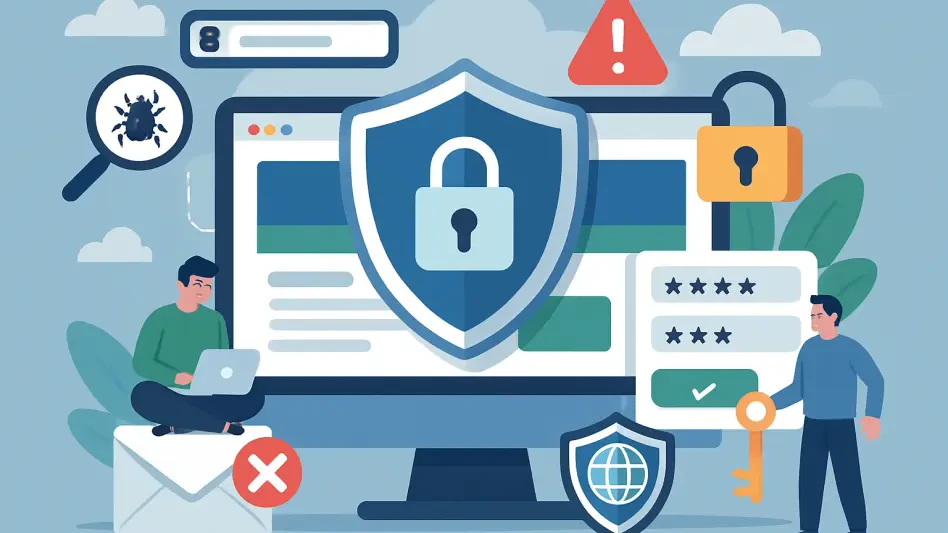Today, cybersecurity is everyone’s responsibility, not just the IT department. Employees must help protect the data network and digital assets because threats are becoming more complex and widespread. Establishing a strong safety-first mentality is the best way to prevent cyberattacks, lower risks, and protect sensitive business information. This article outlines the development of a security culture while describing vital elements and beneficial practices for creating an organization-wide defense system against contemporary cyber dangers.
What is Security Culture?
Building a strong security culture is vital for institutions to protect their digital resources. Developing safety-conscious employees will be essential in 2025 with the rise in complex cyberattacks. IBM’s 2024 Cost of a Data Breach report shows that the average cost of a data breach in the U.S. increased by 10% from last year, reaching its highest ever. The average cost of a data breach worldwide is $4.24 million.
A data breach costs more than just lost information. The time it takes to discover and control the violation also matters. According to IBM, companies take about 197 days to find a breach and 69 days to contain it. Since then, there haven’t been any updates on the numbers, but the market is not looking any better. Therefore, businesses must establish security awareness programs that help them identify threats early and swiftly respond to cyberattacks. Let’s examine why fostering a safety-first mentality is important and how you can set up an almost impenetrable system at your company.
Better Safe and Sorry
Security risks become less penetrable by attackers through staff members who prove their diligence by setting strong passwords and recognizing bogus email messages. Preventative security measures cost less to corporations than investigating and resolving security incidents following their occurrence. The prevention of cyber incidents requires that the Chief Compliance Officer takes the following essential actions:
Evaluate the Security Chain: Review all security components as a system to verify that weak points do not exist and minimize exposure to threats.
Develop a Compliance Plan: A compliance regime that contains policy frameworks, codes of conduct, protocols for risk responses, and staff educational programs for system defenders must be built and sustained.
Prepare Legal Disclosures: The company should guarantee SEC-compliant cybersecurity risk disclosure procedures through proper legal preparation.
Coordinate with Key Departments: The company’s CIO, CPO, IT staff, HR members, and legal representatives must collaborate through coordinated communication about cybersecurity problems.
Implement Data Management Programs: The organization needs to implement data management programs that allow sensitive information access only through proper job-role authorization and work with different departments to protect data.
Establish Law Enforcement Relationships: Working with local, state, and federal law enforcement will help speed up defense actions during attacks.
Create a Response Plan: Develop a response plan that describes the process for identifying and responding to cyber incidents. The plan must define all teams and assigned responsibilities and contain investigation steps and recovery methods.
Invest in High-end Protection: Use resources to protect your enterprise with modern security methods, good database practices, and automatic updates.
Promote Awareness and Reporting: Train your staff to spot cyber threats and establish clear reporting steps.
Preserve Evidence: Secure recorded evidence for possible courtroom proceedings.
Gain Senior Management Support: Ensure that top executives support funding for cybersecurity efforts.
Besides the CCO, every employee must understand the critical importance of defense for corporate data and IT systems. The practice of security responsibility among staff allows individuals to recognize dangerous actions and perform appropriate security procedures.
How to Protect Data and Earn Confidence
Cybercriminals’ main objectives focus on corporate information assets, intellectual property, and customer business records. Attacks against protected security areas always lead to extreme financial losses and substantial damage to the organization’s reputation. Businesses prioritizing security create defensive tactics that lower the probability of unauthorized access.
Big industries must obey data privacy protection laws, with GDPR being one of the leading frameworks for HIPAA and PCI-DSS. Businesses implementing security-focused cultural practices maintain regulatory compliance, preventing financial and legal punishment.
Due to modern digital norms, customers, suppliers, and investors expect businesses to maintain privacy as their primary focus. Firms that develop an effective security culture demonstrate their dedication to cybersecurity to all their stakeholders. The company receives an enhanced reputation and client trust, potentially leading to market competitiveness.
Building the Backbone of Teamwork
Organizations’ commitment to workforce protection in data and job security leads employees to greater satisfaction and extended tenure. Also, it boosts teamwork because workers unite to protect the business. Building a secure workplace requires ongoing dedication and joint participation from every corporate level. Five key elements must exist to prioritize safety throughout an enterprise:
All staff members need procedures to correctly record security issues and occurrences through straightforward channels at appropriate moments. Employers should create a reporting platform that enables staff to properly report possible threats, security breaches, or questionable activities at any time without the danger of retaliation. Companies that maintain transparent communication can react promptly when security incidents occur, which minimizes the consequential damage.
Cybersecurity exists as a constantly transforming field that requires a security culture to maintain similar continuous progress. The enterprise retains its ability to counter emerging risks through persistent security audits, current training curriculum revisions, and constant risk assessment practices. A security-focused approach requires regular monitoring and flexibility to adapt to attackers who change their methods.
6 Steps to a Stronger Security Culture
Successful organizations implement these best practices to develop their risk-aware mindset, which becomes sustainable over time:
Step 1: Security Starts at the Top
Senior leadership must support the security initiative to establish such a culture actively. Employees, from the CEO to front-line staff, should embed security practices into their business functions. When executives and department heads prioritize cybersecurity, they set an example for the rest of the team. Security must become part of the company’s strategic plan, and leaders must provide the resources to maintain safety measures throughout their implementation.aa
Step 2: Provide Ongoing Awareness Training
Employee education through continuous learning programs keeps staff members aware of new security threats and optimal workplace procedures. Regular academic sessions will help employees grasp current threats and solutions to reduce their impact. The training should embrace interactive content, using practical scenarios and real-life examples throughout the educational process. Lessons must include instruction on phishing threats, malware targets, social engineering methods, and steady internet navigation methods. Corporate security remains strong through employee education when training materials keep pace with evolving threats.
Step 3: Set up Clear and Simple Security Policies
To develop a strong security culture, firms must create simple-to-follow guidelines and policies that employees can easily access. The corporation’s digital assets require employees to know their duties in detail, which includes their protection tasks. Security policies need to outline procedures concerning access permissions, password and incident response methods, and usage boundaries. Staff members must receive updated security policies regularly, while authorities update them as new rules or risks emerge. Also, the guidelines should undergo frequent assessments for updating purposes.
Step 4: Rely on Smart Tools for Stronger Defense
To enhance protection, the organization should implement data encryption with multi-factor authentication and intrusion detection systems, which are included in standard workplace security protocols.
Step 5: Encourage Employee Accountability
Each worker is responsible for upholding security requirements. The security promotion strategy involves staff training, recognition models, and security breach education for all employees.
Step 6: Perform Frequent Risk Assessments
Every security culture needs to recognize and handle possible security risks effectively to maintain its effectiveness. Businesses that learn about their security weaknesses through landscape analysis and penetration tests will successfully prevent intrusions from occurring. Regularly perform a complete check of a company’s systems and policies to make sure they meet security standards. Audits are the best way to find weaknesses and compliance problems and provide suggestions to improve your incident response times. This helps companies avoid new threats and identify inefficiencies or outdated software.
Conclusion
Strong security culture development ensures that businesses have become an organizational requirement since technology advances and sophisticated cyber threats require this fundamental measure. Businesses that establish security priorities at every level and execute best-practice principles, including constant education, risk-based management, and precise policies, will develop a defensive security environment to decrease threats and enhance protection capabilities.
By developing a security culture, businesses gain both the protection of their assets and a reputation for defending against cyber threats thanks to their enhanced trustworthiness and accountability throughout the enterprise. Firms adopting security as their essential corporate value will establish better digital age success because cyberattacks keep growing frequently. Organizations must now dedicate resources to build a security culture through which they will gain the advantages of a protected operational space.








